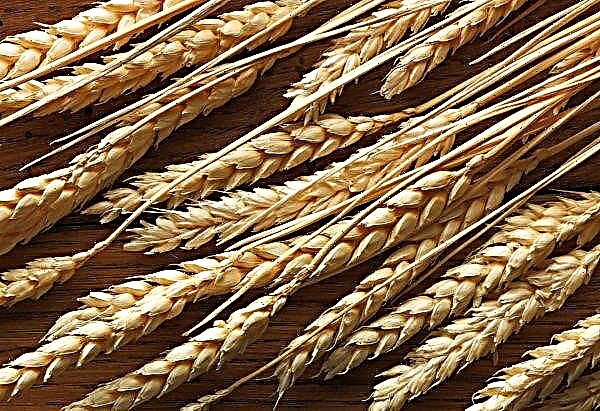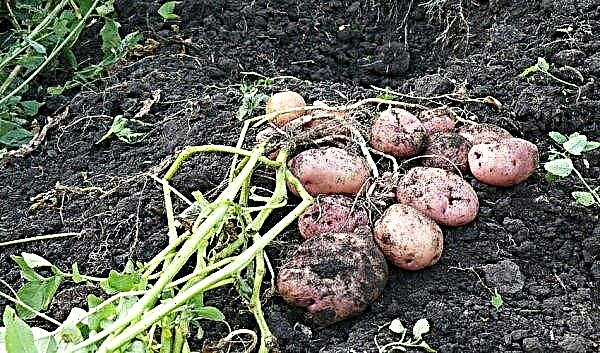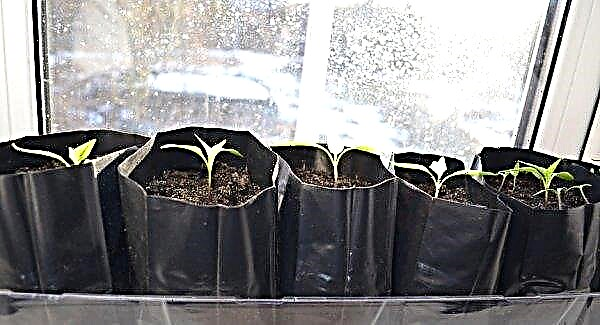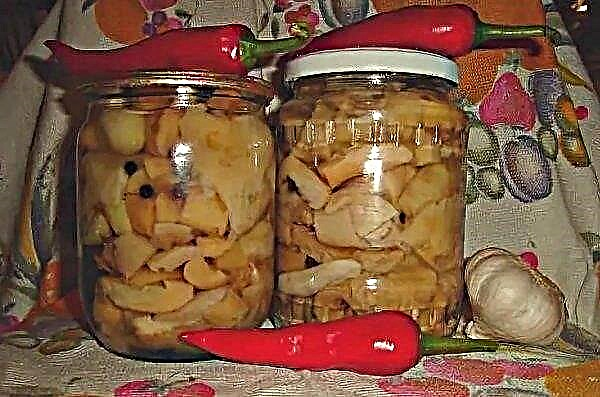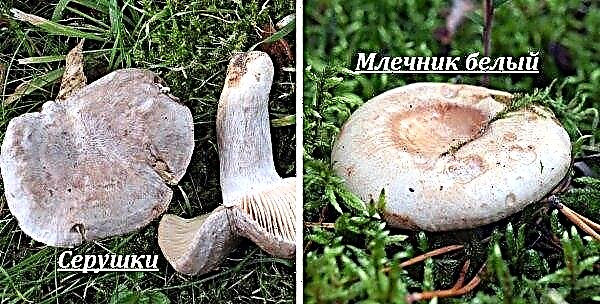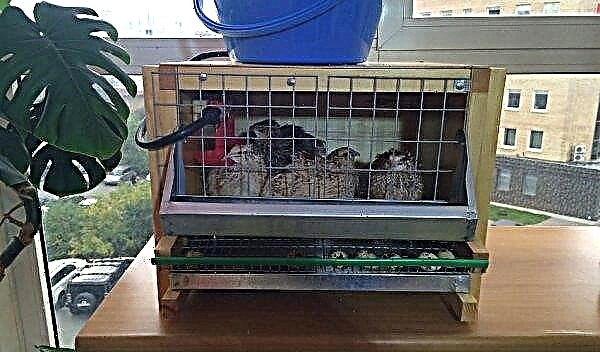Harvesting the autumn harvest always ends with its careful preparation for a long winter. This issue is especially acute for farmers who focus on the cultivation of corn, as the ear is not kept for long. That is why most resorts to a variety of methods for cleaning the grain from the base, one of which is an automatic corn field cultivator. From the article you will learn how to inexpensively make a do-it-yourself corn flake from improvised materials.
Device description
Before proceeding with the calculations and designing of the future unit, you need to figure out what kind of device it is. Terebilka, or, as it is called, grits, is a mechanical or electromechanical device that allows you to instantly clean corn grain from ears.
Due to biological characteristics, corn on the cob is not able to be stored for a long time. Harvested in the fall by spring may become a medium for the development of fungi and other parasites that worsen not only the germination of grain, but also its nutritional characteristics. In addition, grain free from the base helps several times reduce the total area for storing the corn crop, which is important for small farms.Did you know? Corn is widely used not only in the food sector, but also in industry, for example, for the manufacture of alcohol, plastic, glue, cosmetics, paints, plasters.
Such devices are divided into 2 types:
- Industrial - able to clear about 500 kg of crop per 1 hour of work. Such huskers are large in size and require at least 2 auxiliary workers, as the crop is covered with buckets or bags. Installed only on large farms.
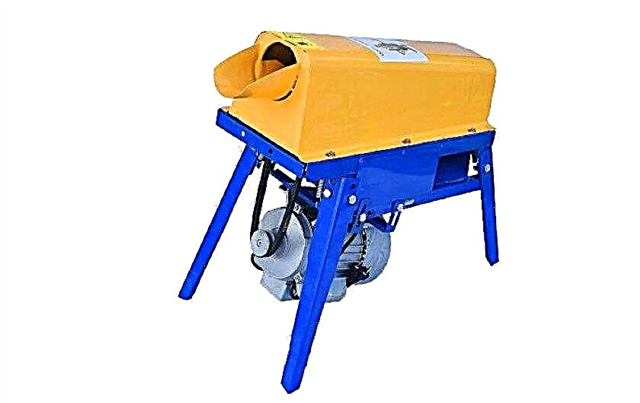
- Amateur - Small devices of small capacity, capable of processing up to 100 kg of fruits per hour of work. Used on small farms or in households.
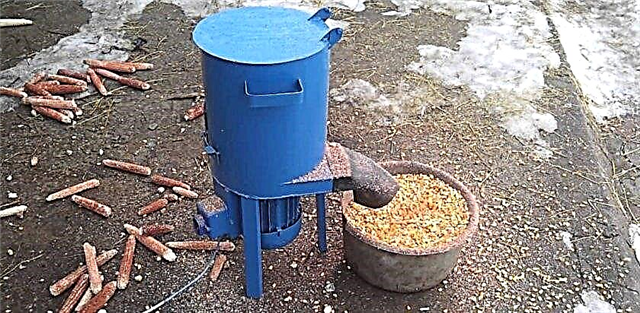
Depending on the type of work, a hoe is:
- automatic - has an electric motor of different power, which is the main acting force;
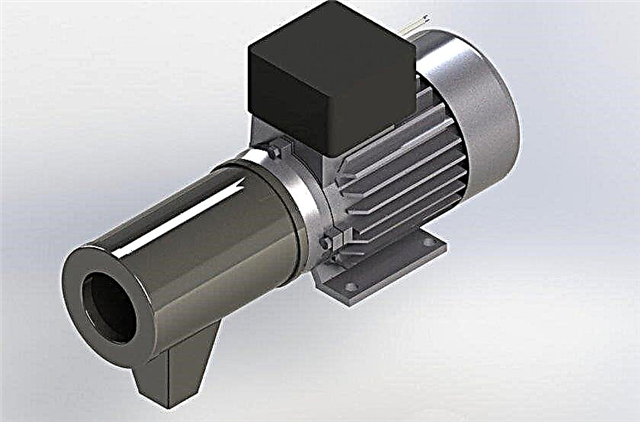
- manual - driven by a mechanical system of shafts, thanks to human participation;
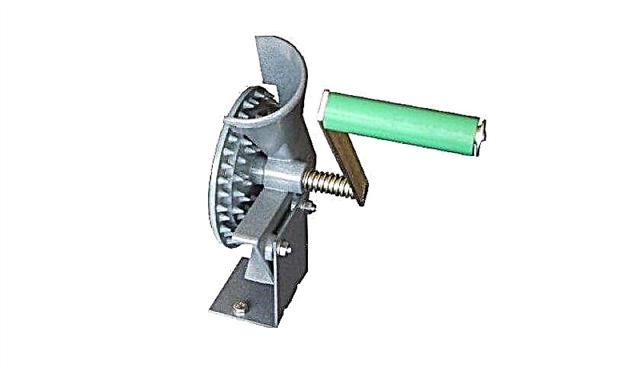
Regardless of the type of design and operating principles, such units have the following components:
- drum - a cylindrical container in which the grain extraction process takes place, having an opening for filling the fruits and collecting tops, as well as a cavity for withdrawing the purified grain;
- peeling element - mounted on the drum shaft, directly affects the cobs, separating the grain;
- prefabricated container - the outer part of the unit, which receives clean grain;
- protective cover - provides protection of rotating mechanisms from external influences;
- drive unit - a set of nodes that ensure the operation of the entire mechanism. It happens, both automatic and mechanical, driven by manual force.
Did you know? The world's first usable electric motor was created in 1834 by the Russian-German scientist and inventor Boris Semenovich Jacobi.
Principle of operation
The device and principles of operation of the corn purifier are simple. Such units are a small hollow cylinder, in one side of which a motor device is installed - often an electric motor with a mounted shaft. A peeling disk is connected to the shaft; it is a system of small round teeth, 6–8 mm high. The surface of the disc has many small holes with a diameter of up to 10 mm.
During the operation of the husk, the engine drives the cleaning disc located at the bottom of the drum. After loading the cobs into the drum, rotating, the disk tears the grain from their surface. Further, the grain falls on the surface of the disk, after which it is brought out through numerous holes into the collection container. Under the influence of gravity and centrifugal action, unpeeled fruits (heavier) settle to the bottom of the drum, and the lungs are pushed up. Thus, uniform cleaning of the cobs from grain takes place.
Video: Corn husk technology
There is another design for cleaning, these are the so-called drumless devices. In their manufacture, the engine is fixed to a powerful support, after which an elongated hollow cylinder with teeth bent inward is attached to the shaft. The design is covered with a protective casing with a discharge chute, through which the grains roll out. In this case, the cleaning of each fetus takes place in turn, each side of the fetus must be uniformly maintained under the influence of the teeth. Further, the grain is brought down, while the ear remains in the hands.
How to make a corn stewer do it yourself?
A home-made machine for peeling corn is a real pride of the farmer, such a device not only effectively fulfills its intended purpose, but also speaks of the thriftiness and ingenuity of its owner. In addition, unlike factory models, its design allows you to install the unit with comfort in almost any environment.
Necessary tools for work
In order to perform all the work efficiently, you will need:
- Phillips screwdriver
- set of open-end wrenches;
- building ruler, square, tape measure;
- joiner's pencil;
- electric drill with a set of drills;
- welding machine (if necessary).
Video: Corn field
Step-by-step manufacturing instructions
To build the simplest unit for cleaning corn grains, you must:
- Create a solid support for the structure (it can be a strong table, the old base from any device). The steel stand can be welded from metal corners or a profile pipe (height 80–100 mm).
- Fasten the electric motor to the support using a bolted connection, for this purpose, according to the mounting holes, drill corresponding through cavities in the support. The bolt connection can be replaced with an integral weld.
- Bolt the engine starting mechanism (power button) to the support, and then connect it to the engine. A cord with a plug must be attached to the back.
- Install the working part on the motor shaft. It is a steel pipe with a diameter of 5 cm, a length of 20 cm and a thickness of 2 mm. On one edge, parallel teeth are cut, slightly bent inward, and on the opposite, an adapter with bolt fasteners is attached for attachment to the shaft.
- Attach a protective metal casing to the structure, its lower part should contain a groove for the output of grain, the side - an opening for feeding grain. The most suitable housing alternative is the outlet duct of the old ventilation system.
You can create a crusher and a more aesthetic appearance, for this you will need to get an old washing machine. Models with vertical loading are best suited for conversion, like the Aurika washing machine.Important! The working part must necessarily have wide longitudinal openings, otherwise the grain in it will gradually accumulate during operation, which complicates the cleaning process at times.
Video: Washing machine corn scoop
The main stages of the manufacture of this husk are:
- Create a solid support, for this you can use a small steel table or weld a tripod from metal rods.
- Install a shallow container at the top of the support with a side height of at least 5 cm, it will serve as a modular container.
- Make a hole in the bottom of the collection tank 1 cm wider than the shaft thickness.
- Fasten the motor to the bottom of the support so that the shaft is threaded up through the bottom of the collection container.
- Cut the bottom on the drum from the washing machine, and attach small legs to it with bolts or a weld.
- Fix the drum above the shaft, exactly in the center, while the legs should rest against the bottom of the collecting tank.
- Install a cleaning disk on the shaft, its diameter should be 1-2 cm narrower than the dimensions of the drum. A pan lid with numerous holes up to 10 mm in diameter and small welded teeth with a height of up to 8 mm can serve as a cover.
- From the remains of the bottom of the drum, mount the cover, fasten it using curtains with a bolt or weld joint.
- Screw the trigger (switch) to the support and connect it to the motor, the reverse part must be attached to the cable with the plug.
Important! For the design of the device, you should choose an engine that provides a torque of the peeling disk of not more than 50 rpm./minute, otherwise the grains will be damaged, which makes them unsuitable for long-term savings.
Corn husk is one of the most important and sought after devices for the modern farmer. There are many units of this type on the market, both industrial and home-type, however, it can also be made using one’s own tools. This will require a small set of tools, as well as spare parts from old equipment, including the old washing machine.





